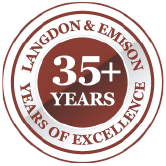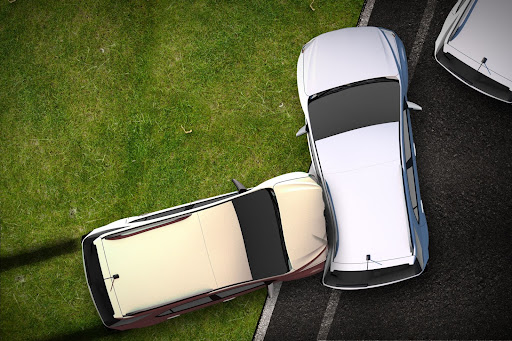Home » Kansas City Personal Injury Lawyer » Kansas City Car Accident Lawyer » Kansas City T-Bone Accident Lawyer


While nobody ever plans to get into a car accident, you must have a thorough understanding of your options following a crash. Our Kansas City car accident lawyers can help you by fighting for the compensation you deserve.
Were you injured in a T-bone accident that wasn’t your fault? You have the right to pursue full and fair compensation from the responsible party. Compensation will help you pay for medical bills, ongoing care, lost income, and more.
You may also pursue justice on behalf of a family member killed in a collision. Compensation can pay for their medical and funeral expenses, as well as help you and your family recover from your loss.
If you were injured, it’s important to exercise your legal rights and hold the responsible party accountable for their actions. Langdon & Emison can help you.
As a nationally recognized firm specializing in car and truck crashes, we’ll work swiftly and expertly to get you and your family the compensation you need. Call us today to get started.

In a legal context, “fault” refers to a person or party’s responsibility for causing harm. In car accidents, fault refers to whoever caused the initial crash. Whoever is found to be at fault is responsible for compensating victims for their physical injuries and property damage.
You won’t have a case or receive compensation if you can’t prove fault. That’s why it’s crucial to hire an experienced Kansas City T-bone accident lawyer.
A good attorney will know exactly which avenues to pursue for maximum compensation. Here are just a few of the ways that Langdon & Emison attorneys can prove fault.
In T-bone accidents, the person who hit another vehicle is not necessarily at fault, and the person who was hit is not necessarily innocent. It doesn’t matter who hit whom, but rather who did and who did not have the right of way. This is the most common way to determine fault in T-bone accidents because most of these collisions occur at intersections.
At an uncontrolled intersection, drivers must follow the “first in, first out” rule and yield to the right. Left-turning drivers must yield to oncoming traffic unless they have the green arrow, and even in controlled intersections where traffic devices are present, drivers must always remain vigilant.
A driver could cause a T-bone accident if they violate the right of way because they’re intoxicated, distracted, or driving aggressively.
For example, Driver A has the green arrow to turn left and therefore has the right of way, but Driver B blows through their red light and crashes into Driver A. In this case, Driver B is responsible because they violated the right of way.
Another way to determine fault is to examine which side of the vehicle was damaged in the collision. Damage to the driver’s or passenger’s side could help indicate which way the other car was traveling immediately before the collision.
In these situations, traffic light patterns, witness testimony, and video recordings are necessary to recreate the scene and determine who was at fault.
As mentioned above, all drivers must be vigilant and anticipate the actions of other drivers. They must exercise reasonable care at all times, including keeping their eyes on the road and being sober while operating their vehicle.
People who fail to exercise reasonable care are more at risk of traffic violations, which often cause accidents.
It’s important to remember that accidents can be caused by drivers with or without the right of way. For example, illegal U-turns, speeding, and brake failure due to poor vehicle maintenance are causes of T-bone accidents where the driver had the right of way.
T-bone accidents are so dangerous because the only thing protecting occupants is the door. In rear-end collisions, passengers have several feet of distance between them and the other car; in frontal collisions, the engine separates vehicles.
But in side-impact collisions, the thin metal frame is the only defense.
As you can imagine, this is a recipe for disastrous injury and even death. Below are some of the most common injuries resulting from side-impact collisions.
The force of a T-bone accident can cause an occupant’s head to strike a hard surface in their car, such as the dashboard, window, or door.
Striking a hard surface with such force can cause a host of injuries to the head and brain, including skull fractures, bruising or hemorrhaging on or around the brain, and/or immediate loss of consciousness.
Many victims suffer a concussion, a mild form of traumatic brain injury (TBI). Unfortunately, others suffer moderate to severe TBI that can make life very difficult.
Concussions are ranked (graded) by the severity of symptoms. Grade 1 is mild, with symptoms lasting less than 15 minutes and no loss of consciousness. Grade 2 is moderate with symptoms lasting longer than 15 minutes and no loss of consciousness, and Grade 3 is severe with the individual losing consciousness, if even just a few seconds.
Traumatic brain injuries are more serious. Even moderate TBI has graver outcomes than Grade 3 concussion. TBIs are caused by a violent jolt or blow to the head (striking a hard surface such as the dashboard or window) and are classified as “open” or “closed.”
Open TBI occurs when an object pierces the skull, exposing brain tissue and damaging critical functions in the process. Closed TBI occurs when damage occurs inside the skull, with the skull remaining intact.
Symptoms are serious for both open and closed TBI and require immediate medical attention. However, many victims don’t even realize they’ve suffered a head injury in the shock and confusion following their accident. Some symptoms are immediate, but others may take weeks or even months to appear.
If they do appear, TBI symptoms include:
Quick, violent, side-to-side movements can cause tendons and ligaments in the neck to stretch and tear. The most well-known of these injuries is called whiplash.
Whiplash is often accompanied by serious pain as well as dizziness, fatigue, headache or head pain, neck pain and stiffness, loss of range of motion in the neck, and pain or tenderness in the shoulders.
Car accident victims often report hearing a ringing or buzzing in their ears. Usually, this is just a temporary side effect of the crash and goes away in a few minutes or hours.
However, victims of side-impact crashes often experience these symptoms for much longer – sometimes, they never go away.
The force of impact, or foreign objects like metal or glass, can cause a victim’s eardrum to rupture. This injury could lead to complications such as infection or cholesteatoma. Cholesteatoma is a condition marked by an abnormal collection of cells within the ear that disrupts the delicate structures responsible for hearing and balance.
Temporal bone fracture (break) and ossicular dislocation (separation of the middle ear bones) are also common side-impact crash-related ear injuries.
Another vehicle slamming into the side of your car can cause tremendous damage to your abdomen and internal organs. Foreign objects (glass, metal, etc.) can pierce or puncture your abdomen, often leading to internal bleeding and organ damage, possibly even organ failure.
In a T-bone accident, not much separates you from the outside – just a thin metal door and a sheet of glass. This limited protection can be disastrous for crucial organs like the kidneys, liver, and lungs.
If you suffered any of the above injuries, you already know how physically and financially draining T-bone accidents can be.
Know that you are not alone on your journey to healing. Langdon & Emison is here to help you and your family recover by getting you the compensation you need and deserve.
Call our Kansas City car accident lawyers at (866) 931-2115.

When it matters, we'll be there.
"*" indicates required fields

